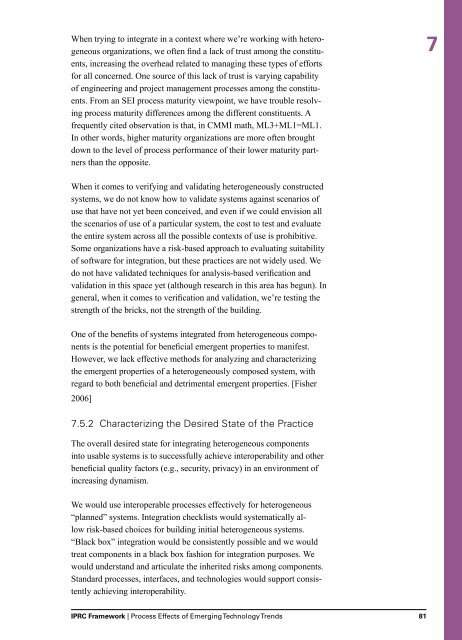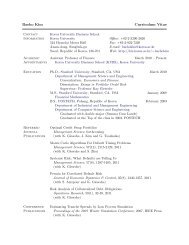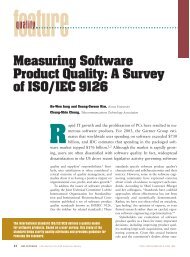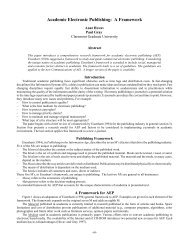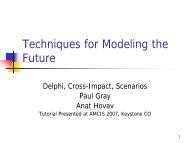A Process Research Framework - Software Engineering Institute ...
A Process Research Framework - Software Engineering Institute ...
A Process Research Framework - Software Engineering Institute ...
You also want an ePaper? Increase the reach of your titles
YUMPU automatically turns print PDFs into web optimized ePapers that Google loves.
When trying to integrate in a context where we’re working with heterogeneousorganizations, we often find a lack of trust among the constituents,increasing the overhead related to managing these types of effortsfor all concerned. One source of this lack of trust is varying capabilityof engineering and project management processes among the constituents.From an SEI process maturity viewpoint, we have trouble resolvingprocess maturity differences among the different constituents. Afrequently cited observation is that, in CMMI math, ML3+ML1=ML1.In other words, higher maturity organizations are more often broughtdown to the level of process performance of their lower maturity partnersthan the opposite.7When it comes to verifying and validating heterogeneously constructedsystems, we do not know how to validate systems against scenarios ofuse that have not yet been conceived, and even if we could envision allthe scenarios of use of a particular system, the cost to test and evaluatethe entire system across all the possible contexts of use is prohibitive.Some organizations have a risk-based approach to evaluating suitabilityof software for integration, but these practices are not widely used. Wedo not have validated techniques for analysis-based verification andvalidation in this space yet (although research in this area has begun). Ingeneral, when it comes to verification and validation, we’re testing thestrength of the bricks, not the strength of the building.One of the benefits of systems integrated from heterogeneous componentsis the potential for beneficial emergent properties to manifest.However, we lack effective methods for analyzing and characterizingthe emergent properties of a heterogeneously composed system, withregard to both beneficial and detrimental emergent properties. [Fisher2006]7.5.2 Characterizing the Desired State of the PracticeThe overall desired state for integrating heterogeneous componentsinto usable systems is to successfully achieve interoperability and otherbeneficial quality factors (e.g., security, privacy) in an environment ofincreasing dynamism.We would use interoperable processes effectively for heterogeneous“planned” systems. Integration checklists would systematically allowrisk-based choices for building initial heterogeneous systems.“Black box” integration would be consistently possible and we wouldtreat components in a black box fashion for integration purposes. Wewould understand and articulate the inherited risks among components.Standard processes, interfaces, and technologies would support consistentlyachieving interoperability.IPRC <strong>Framework</strong> | <strong>Process</strong> Effects of Emerging Technology Trends 81


